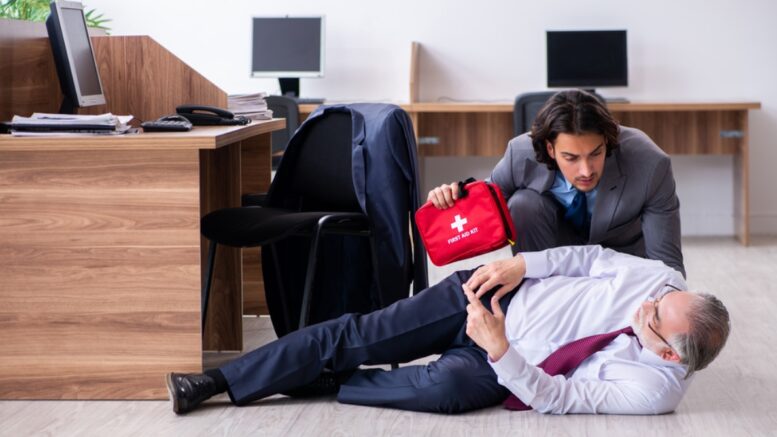Emergencies can happen without warning at any given time. There isn’t any proper time for an emergency to occur, so you must always be prepared. Sometimes you don’t have enough time to run to the hospital or even reach a doctor soon enough, and dealing with it can be difficult.
Crises can be avoided if you’re well-equipped with the right techniques and tools at home. However, medical emergencies require urgent action, so these tips will help you handle them.
What is an Emergency?
An emergency is used to describe an unforeseen event. Emergencies occur without a warning so you never know what to expect.
A medical emergency is when somebody suffers an injury or an illness that needs to be addressed urgently. They present an imminent threat and without the aid of a certified professional or somebody who has the right knowledge.
Dealing with medical emergencies can be challenging, but with proper guidance and correct techniques, they can be dealt with immediately, posing no risk for the injured. Whether seeking assistance from urgent care online or taking the right steps, emergencies can be avoided. You can go through the best online urgent care websites to pick one that can help you in an emergency.
Some Common Medical Emergencies
These are some medical emergencies that are common, and people encounter very often,
- Bleeding: Cuts and wounds are the most common injuries at home, causing bleeding. While not all bleeding is concerning, heavy bleeding requires immediate attention.
- Losing consciousness: People may faint, collapse or be unconscious for many reasons. So they need to be dealt with urgently.
- Pain: Severe pains and aches need immediate attention as they can quickly become fatal. If not, the severity of pain can increase, causing the sufferer to collapse or even die.
- Strokes: They occur from the blood supply cutting off to any part of the brain or blood vessels bursting. If a person is having a stroke, tend to them immediately.
- Seizures/Epilepsy: Those who have epilepsy can experience seizures at any time. However, seizures can happen to anyone regardless.
- Heart attack: There is no time or age range for a heart attack. This is why they’re so dangerous and high-risk.
- Poisoning/ Overdosing: This is high-risk if proper care is not taken immediately.
Signs of Emergency
You can tell if any of the common medical emergencies mentioned above are about to occur. Check them out below,
- Heavy bleeding from a cut or wound can be a cause for concern. So observe if it continues after several minutes, combined with pain. If so, this is an emergency.
- If the person who fainted regains consciousness within a minute, it isn’t worrisome. If not, then it is an emergency issue.
- It is an immediate emergency if the person in pain collapses or the area has visibly changed, such as turning blue or purple.
- If the person having a stroke is numb in parts of their body, slurs speech, or can’t see correctly, it is a significant sign of an emergency.
- Seizures are an emergency when the sufferer struggles to become stable after an episode.
- Severe chest pains, shooting pains down the arms, and difficulty breathing are signs of a heart attack. So if they occur, give urgent attention.
- Poisoning/ Overdose: The person regurgitates blood or loses consciousness; this is when poisoning or overdosing becomes serious.
Tips To Help You Handle Emergency Issues at Home
Preliminary Measures
- Check on the Person: First, keep a close eye on the person who is experiencing discomfort. Observe their breathing, their pulse rates, and their eyes.
If they respond, ask them how they are feeling and where they feel pain. If they can’t, monitor their breathing and heart rate; if everything seems normal, let them rest.
- Stay Calm: This is crucial. You need to stay calm and maintain composure when you’re tending to a sick individual. If you panic or “freak out”, this will stress the other person out and make things more frustrating.
We know it’s not easy to stay calm in such situations, but it is best to be patient and think through calmly and logically.
- Call Emergency Services: If the patient is still not stable yet, call 911. Be clear on the phone with the operator and tell them everything.
Since you’ll be handling the situation at home, listen carefully to what the operator is saying, follow all the directions, and pay attention to every word.
For Critical Situations
Unfortunately, sometimes doing the things above may not be enough. So you need to do the following things below to better address the situation,
- Administer CPR: Knowing how to give CPR can save lives. Remember to be steady and calm during the procedure.
Let the 911 dispatcher know if you don’t know CPR, and they will direct you through the whole process.
- Move the Patient: Move the sick person to a more comfortable location, preferably with more light and on a flat surface. While you’re moving the person to another location, make sure to support their head and their back.
Preparing for Emergency Beforehand (at home)
- Always have a first-aid kit ready. A good kit should have the following,
- All the emergency phone numbers (doctors, hospitals, neighbors, etc.)
- Plasters, band-aids, gauze
- Cotton swabs, alcohol pads
- Disposable gloves
- Burn cream, saline solution (Corticosteroids)
- Antiseptic solutions
- Necessary medications for painkillers, gastrointestinal issues, for nausea, etc.
- Thermometer
- Have an overnight bag ready for sudden visits to the hospital. Put your clothes, toothbrush, chargers, slippers, water bottles, and other items you may need.
- Educate yourself on CPR (mouth-to-mouth and chest compression), administering injections, cleaning wounds, etc.

CPR (Chest Compression)
I. Start with chest compressions. Push down on their chest at 100-120 compressions a minute. There are apps for smartphones to make sure you’re counting that.
II. If they start vomiting or coughing, turn them on their side, so they don’t choke.
III. Continue compressing their chest until they start breathing or until help arrives.
CPR (Mouth-to-mouth)
- Start with chest compressions, and after every 30 compressions, give two rescue breaths into the other person’s mouth.
- Gently lift their head and their chin with two fingers, pinch their nose, and seal your mouth to blow into theirs steadily for one second.
- If their chest rises, and if so, give two more rescue breaths.
- Continue this with 30 chest compressions and two breaths until they’re awake.
Administering Injections
Relax and lift the skin with the muscle, and push in the needle firmly at a 90° angle (straight down). Then, push in the medicine and pull the needle out swiftly.
Cleaning Wounds and Stopping Bleeding
To clean wounds,
- Run the affected area under water for 5-10 minutes.
- Soak cotton gauze in saline or use an alcohol pad, and pat the wound gently.
- Time to dress the wound. Apply a non-sticky plaster or band-aids, or use a waterproof dressing so the wound doesn’t get infected.
- Apply pressure to the wound if it bleeds through and change if it gets too messy.
To stop bleeding,
- Apply slight pressure to the area with a tissue, cotton pad, or gauze for at least 15 minutes.
- Apply ice with a clean and sterile cloth on the wound.
- Have the wounded person lie in an elevated position.
- Remember to keep applying pressure while the bandage is wrapped around if the bleeding doesn’t stop.
Conclusion
We hope you never have to run into an emergency. But if you do, we hope this article will have you covered. Share this with friends and family so they are aware of what to do in the event of an emergency. Stay safe and vigilant!
